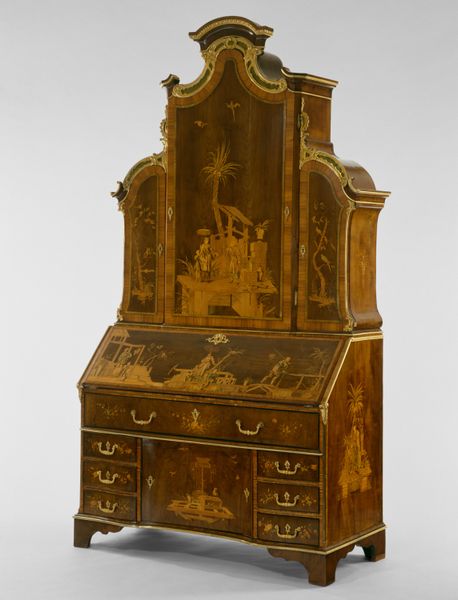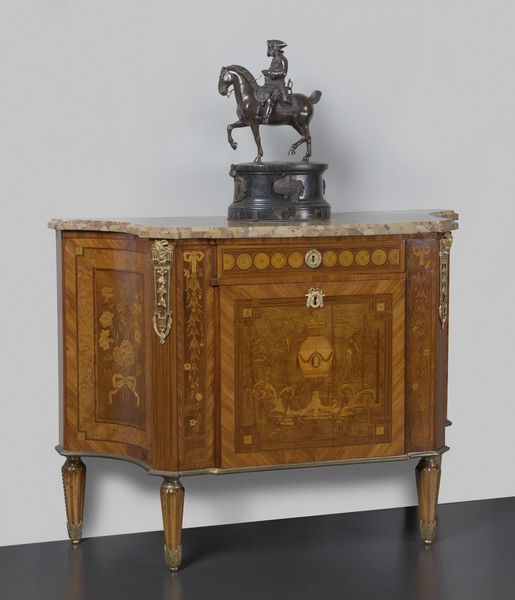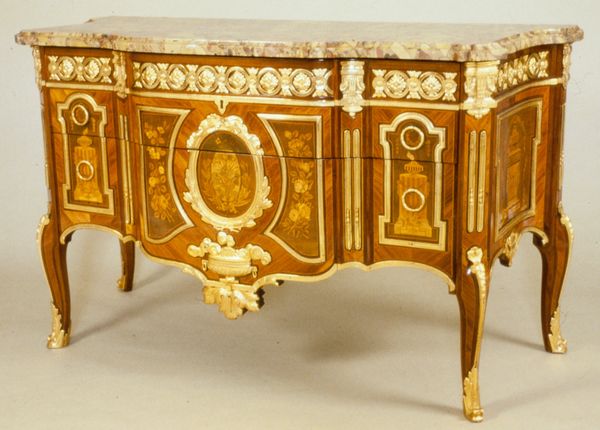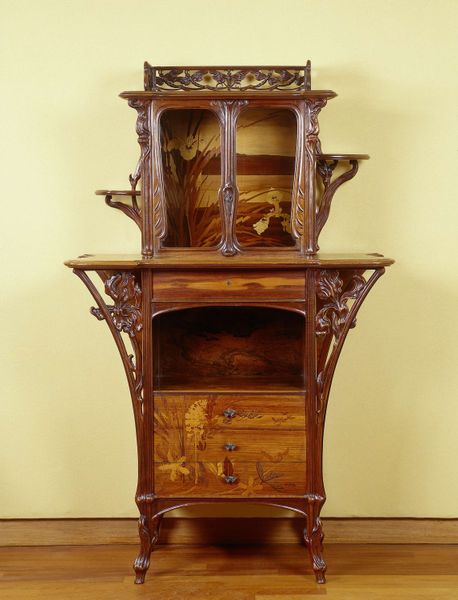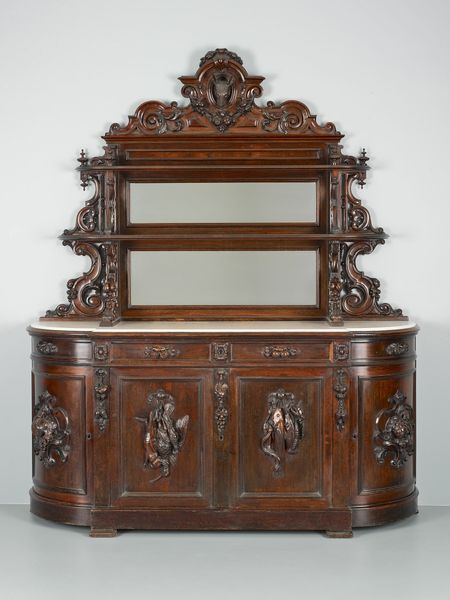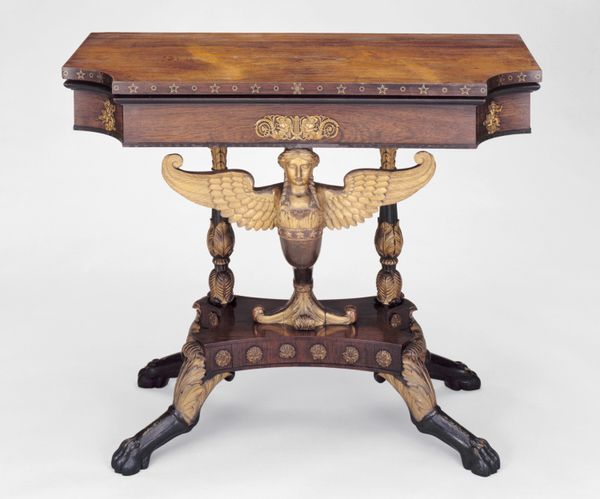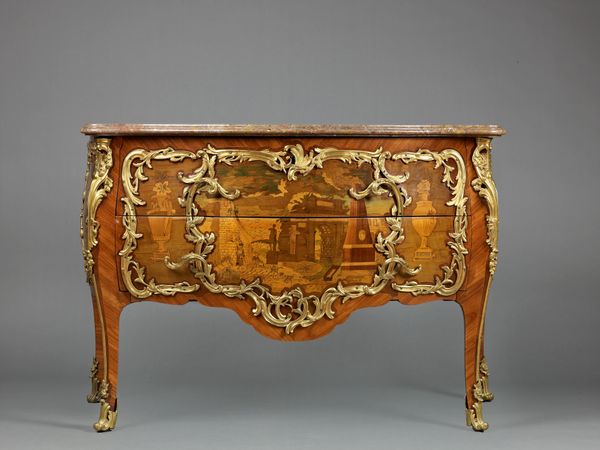
carving, sculpture, wood
#
interior architecture
#
carving
#
sculpture
#
asian-art
#
furniture
#
geometric
#
sculpture
#
wood
#
decorative-art
Dimensions: 13 1/2 x 27 3/8 x 12 7/8 in. (34.29 x 69.53 x 32.7 cm)
Copyright: Public Domain
This sutra table was made by an anonymous artist in Tibet. Its purpose was to hold religious texts in monasteries or private homes. The table's intricate carvings and inscriptions give us a glimpse into Tibetan Buddhist culture, where art and religion are deeply intertwined. The detailed craftsmanship suggests that it was probably commissioned for an affluent patron, perhaps a noble or high-ranking monk. Tables like these weren't just functional, but were also symbols of status, devotion, and learning. We can see how this culture valued spiritual knowledge. As art historians, we can explore the social meaning of this table by looking at the history of Buddhism in Tibet, the role of monasteries, and the relationship between religious art and social hierarchy. Examining religious texts and monastic records can reveal more about the table's place in the social and cultural context of its time.
Comments
minneapolisinstituteofart almost 2 years ago
⋮
Low wooden tables were commonly used by Tibetan monks to support their sutras while reading. The top surface is proportioned to accommodate the size and shape of a standard manuscript and the height is convenient for someone seated on the floor. Thanka paintings show small tables like this being used as portable altars set with offerings or ritual implements. The cabriole legs, construction techniques, and basic form derive from Buddhist altar tables introduced to China just prior to the Tang dynasty (7th century). Carved in low relief with religious symbols and brightly colored with lacquer, this small piece of furniture would have fit perfectly with the rich brocades and decorative architecture of a Tibetan monastery.
Join the conversation
Join millions of artists and users on Artera today and experience the ultimate creative platform.
